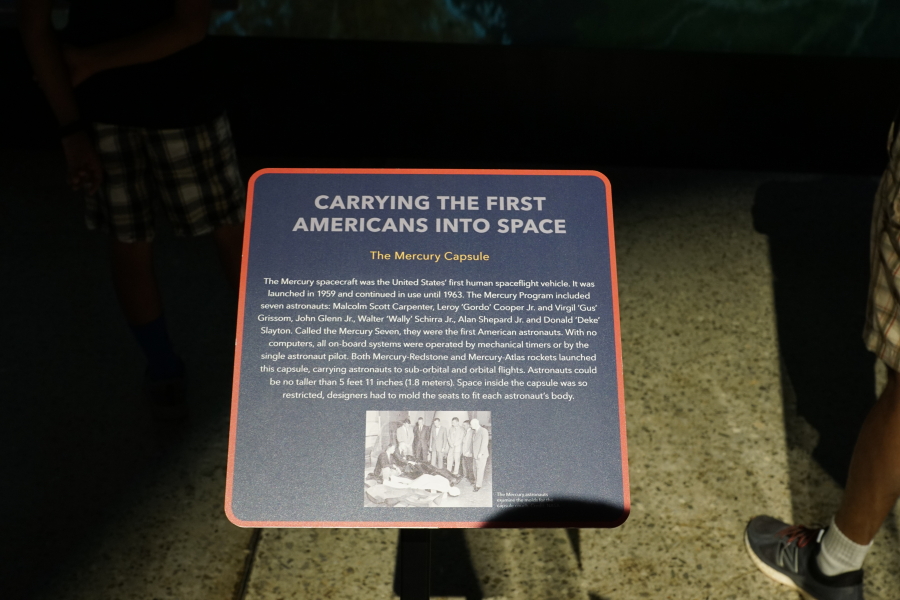| Prev |
heroicrelics.org Apollo: When We Went to the Moon Site Index Apollo: When We Went to the Moon Gallery |
Next |
dscd3155.jpg
The sign accompanying the Mercury spacecraft model.
It reads
Carrying the First Americans into Space
The Mercury Capsule
The Mercury spacecraft was the United States' first human spaceflight vehicle. It was launched in 1959 and continued in use until 1963. The Mercury Program included seven astronauts: Malcolm Scott Carpenter, Leroy 'Gordo' Cooper Jr, Virgil 'Gus' Grissom, John Glenn Jr., Walter 'Wally' Schirra Jr., Alan Shepard Jr. and Donald 'Deke' Slayton. Called the Mercury Seven, they were the first American astronauts. With no computers, all on-board systems were operated by mechanical timers or by the single astronaut pilot. Both Mercury-Redstone and Mercury-Atlas rockets launched the capsule, carrying astronauts to sub-orbital and orbital flights. Astronauts could be no taller than 5 feet 11 inches (1.8 meters). Space in side the capsule was so restricted, designers had to mold the seats to fit each astronaut's body.
Of course, the first manned Mercury spaceflight wasn't until May 5, 1961; 1959 saw the first Little Joe launches.
The cramped quarters in the spacecraft led McDonnell pad leader Guenter Wendt to note that "You get in with a shoehorn and get out with a can opener!" The custom-molded couches, however, were devised not so much to save space as to help the astronaut endure the G forces of reentry.

| Time picture taken | Sun Jun 23 09:26:36 2019 |
| Location picture taken |
Apollo: When We Went to the Moon Exhibit Space Hall "Old" Museum U.S. Space & Rocket Center Huntsville, AL |
| Prev | Apollo: When We Went to the Moon Gallery | Next |